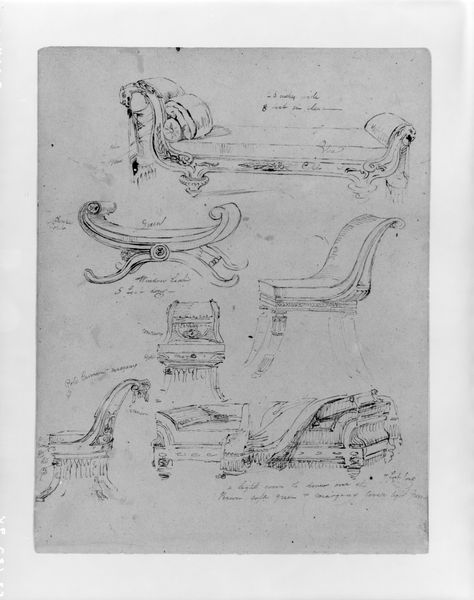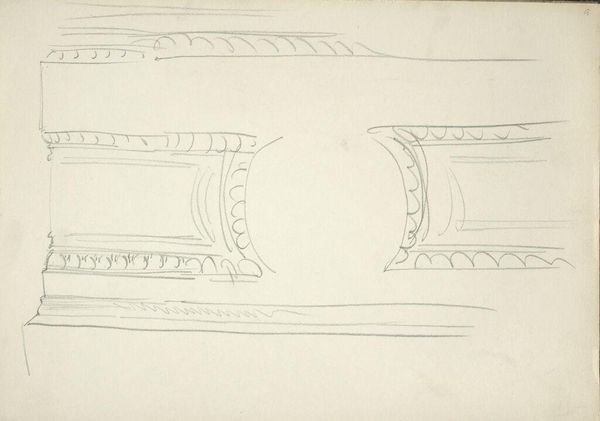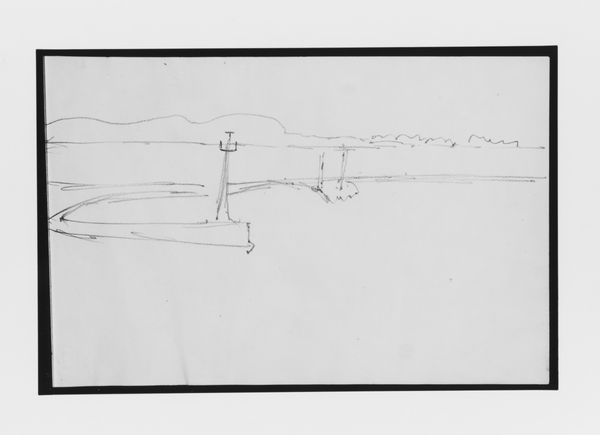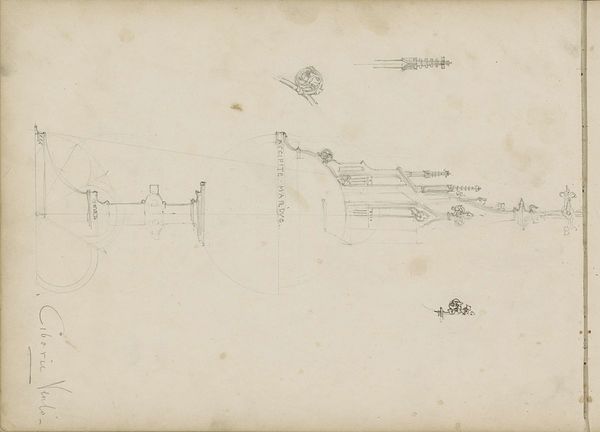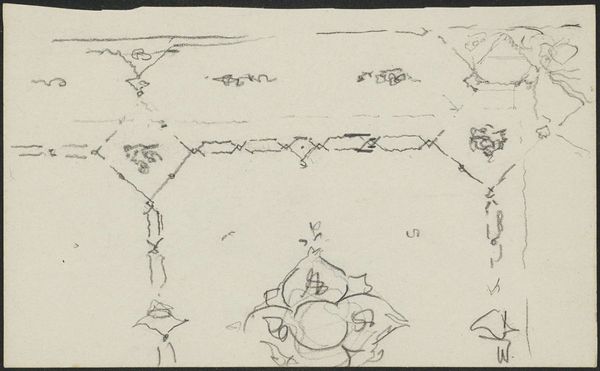
Design for a tea-pot, verso: design for a covered dish and bowl 1800 - 1866
0:00
0:00
drawing, print, pencil
#
drawing
#
neoclacissism
# print
#
pencil
#
decorative-art
Dimensions: Sheet: 15 7/8 x 21 1/4 in. (40.3 x 54 cm)
Copyright: Public Domain
Editor: Here we have "Design for a tea-pot, verso: design for a covered dish and bowl" by Thomas Fletcher, dating sometime between 1800 and 1866. It's a pencil drawing, almost architectural in its precision. It seems quite formal, almost imposing, despite being sketches. What's your take on it? Curator: For me, the drawing transcends mere aesthetics. We're looking at a record of production, the initial stages of material culture. Think about the labour embedded in this image. Someone designed it, of course, but the implication is that this design will turn into a crafted luxury object and the labor needed to get it made. Editor: So, you’re seeing beyond the objects themselves? Curator: Precisely. Look at the neoclassical details. They suggest a consumer base desiring status, mirroring elite lifestyles. Pencil, here, becomes a tool of commerce and control, dictating the form of silver or ceramic ware intended for the tables of the wealthy. It shows the distance between those who consume, and the people who do the work needed to produce it. Editor: That's interesting. It flips my initial reaction on its head. So, rather than just appreciating its form, you’re inviting us to consider the system it represents? The materials, labor, and, in the end, consumption? Curator: Exactly! This drawing is just the starting point, but it's indicative of all the human processes and materials involved in bringing such items into being. The drawing itself seems to reinforce boundaries – setting the scene for upper-class tea ceremonies that, maybe we could even argue, perpetuate existing labor practices! Editor: I never considered how a simple sketch could reveal so much about production and society. It is almost like it tells of that labor! Curator: It certainly points toward that direction of analysis! It reminds us that everything we see, especially within decorative arts, comes from a material process within society and power dynamics that shape art itself!
Comments
No comments
Be the first to comment and join the conversation on the ultimate creative platform.
